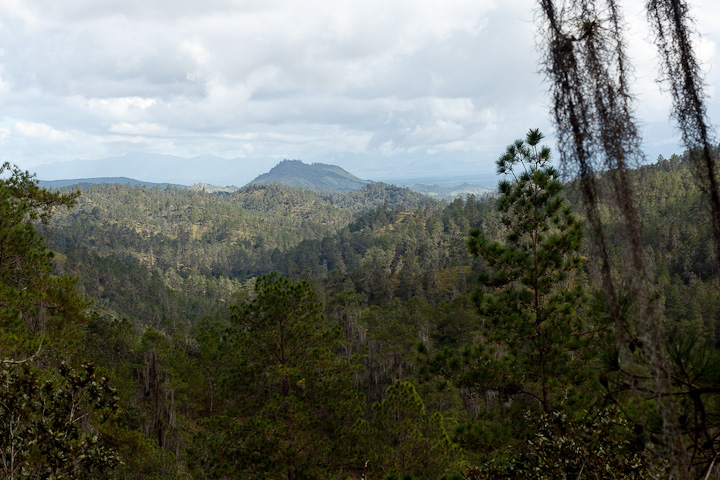
Morning in Gualaco, looking southwest. Those are the cloud forests of the Sierra de Agalta National Park in the background.
We have arrived (finally) in Gualaco, after a crazy few days passing from Vancouver to San Pedro Sula to Tegucigalpa.
It has been quite hectic getting settled, and I am having difficulty re-adjusting to Spanish. We have an apartment now, and so are feeling a bit less nomadic than when staying at the hotel.
We went out and saw the areas we will be working in yesterday, and they are in really really rugged terrain! The forests are mostly pine (Pinus oocarpa), and the terrain is mountainous and steep in many paces. Much of the region is second growth, and is used for ranching. The forest is rather open, due to periodic burning and grazing, but getting around is still rather difficult due to the topography. We tried some caracara call playback, but had nothing responding whatsoever. This is very different from the situation in Amazonia.

The rolling pine forests northwest of Gualaco. This is right near the are where caracaras nested last year.
We are planning on staying put for the next few days, but will head out to Tegucigalpa next week for permit applications, and then will do a scouting mission starting on the 20th. With terrain like this, we will most definitely be getting our exercise!
